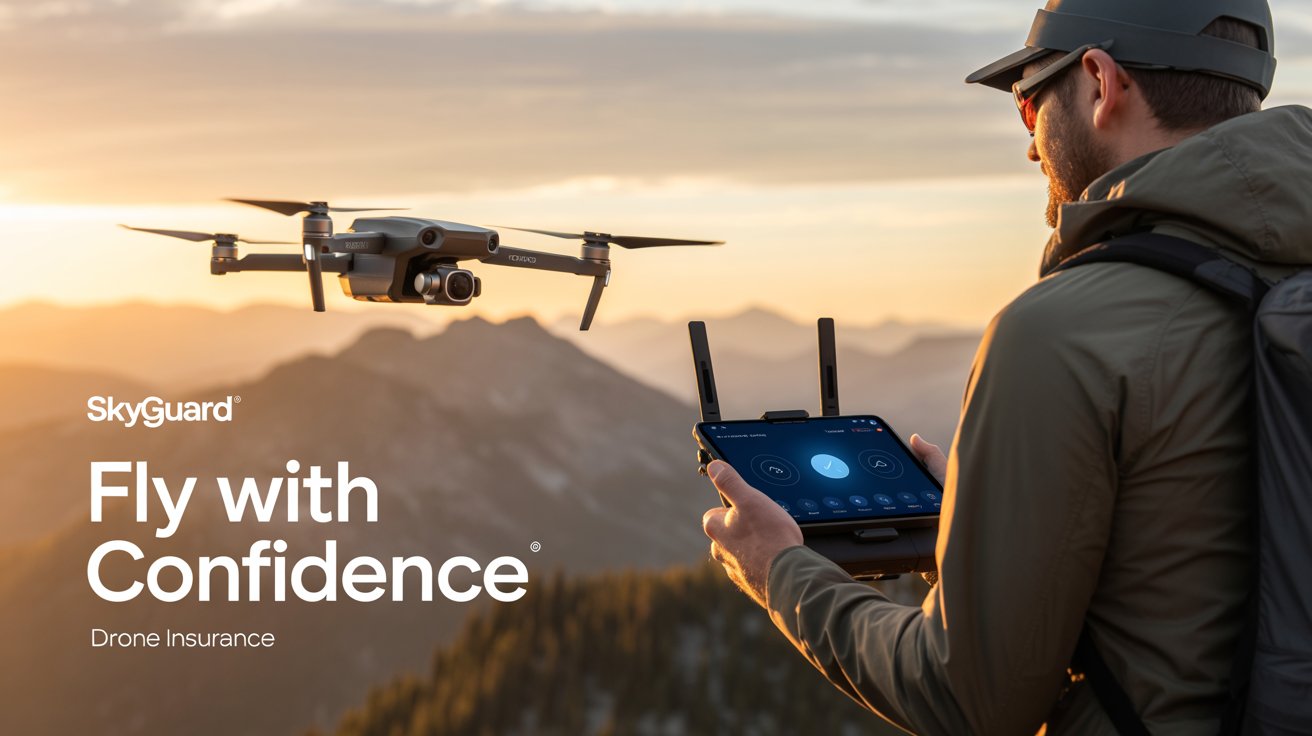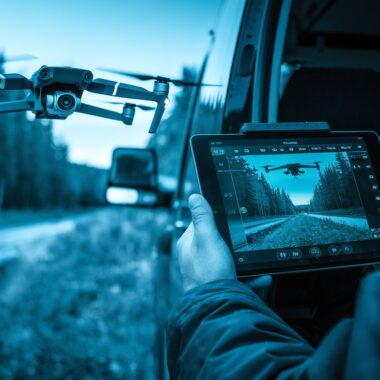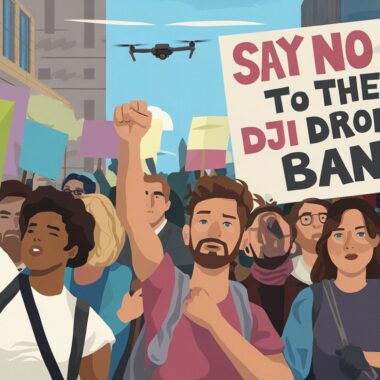Most drone insurance content repeats definitions. This guide goes deeper—how underwriters really price risk, what claims adjusters look for, coverage traps that bite professionals, and a practical calculator to estimate a fair premium for your operation.
⬇️ Download the Drone Insurance Risk Calculator (Excel)
Summary
Drone insurance used to be a niche aviation product; today it’s a business-critical control for creators, surveyors, utilities, and public safety. The smartest buyers treat insurance like a risk-trading decision: keep the predictable, low-severity stuff; transfer low-frequency, high-severity events (injury, property damage, flyaway) to an insurer. Use data—your flight count, environment, payload, and client contracts—to negotiate terms.
This guide gives you:
- A practical framework to quantify expected loss and sanity-check quotes.
- A plain-English breakdown of coverages, exclusions, and endorsements that matter for UAS.
- A claims-readiness checklist to cut settlement time.
- Templates to match RFP/COI requirements without over-insuring.
- FAQs to help your page rank for “drone insurance,” “commercial drone insurance,” “UAS liability,” “hull coverage,” “non-owned drone insurance,” and more.
Why Drone Insurance Is Different
UAS risk is dynamic and mobile, shaped by airspace, RF link integrity, GNSS reliability, pilot proficiency, and mission context. Many carriers write drone policies on aviation forms (not standard CGL) with specialized definitions for “aircraft,” “pilot in command,” and “unmanned aircraft system.”
Don’t assume your business policy covers flight ops. Most CGLs exclude aircraft.
Who Needs Drone Insurance (and Why)
- Freelance creators & real estate: venue COIs; protect spectators entering the ops box.
- AEC & surveying: contract requirement; high payload values; owners often demand $1M-$5M with subrogation waivers.
- Utilities & industrial inspection: elevated BI/PD exposures; higher limits; non-owned aircraft coverage.
- Public safety: hull + liability + non-owned + training; evidence/data considerations.
- Hobbyists: homeowners are rarely adequate; consider at least liability and hull for higher-value rigs.
Coverage Types That Matter (Beyond the Basics)
- Aviation Liability (Third-Party): bodily injury & property damage. Cornerstone for COIs.
- Hull (Physical Damage): agreed value vs ACV; deductibles change pricing.
- Payload/Equipment: schedule gimbals, thermal sensors, LiDAR, RTK, tablets.
- Non-Owned UAS Liability/Hull: critical when flying client/rented units.
- Personal & Advertising Injury: privacy/media-often narrowed or excluded.
- Cyber/Data & Media: data restoration, incident response, and some IP/media claims.
- Business Interruption: loss of income while grounded post-incident.
- Errors & Omissions: mapping/survey deliverables, inspection reports, analytics.
- Premises/Training: workshops, indoor demos.
- Special Endorsements: night ops, BVLOS, indoor flight, over people, government AI, P&NC, waiver of subrogation.
Exclusions & Traps That Bite Pilots
- Aircraft exclusion in CGL-don’t rely on it for UAS.
- Geo/ops carve-outs over water, crowds, and events may be excluded.
- Autonomy settings-definitions of PIC/LOS matter.
- Unscheduled payloads may be uncovered.
- Privacy/media sub-limits or exclusions are common.
- Contractual liability-not all indemnities are insurable.
How Underwriters Actually Price You (Levers You Control)
- Exposure: annual flights, minutes, T/O & landing frequency.
- Environment: urban vs rural, indoors, infrastructure proximity, maritime.
- Airframe & Maintenance: redundancy, firmware discipline, logs.
- Pilot & SOPs: hours on type, recency, checklists, LAANC/NOTAM workflow.
- Payload & Mission: heavier/specialized sensors drive severity.
- Data Practices: retention, encryption, client handling.
- Claims Hygiene: prior losses, near-miss culture.
Actionable levers: standardize checklists, log battery cycles, track firmware notes, practice emergency procedures monthly, and keep an incident response SOP. These artifacts lower perceived risk and strengthen negotiations.
A Transparent Expected-Loss Model (With Calculator)
Insurers quote a premium above your Expected Loss (EL). The markup (load factor) funds admin, distribution, and profit. Model incident probabilities × severities to estimate a fair premium.
Back-of-Envelope Starters (Edit in the Workbook)
- Hull loss per flight: 0.2%-0.5%
- Payload loss per flight: 0.1%-0.4%
- Liability incident per flight: 0.05%-0.15%
- Liability severity: \$20k minor PD is a prudent baseline; injuries can be six figures+
⬇️ Download the Drone Insurance Risk Calculator (Excel)
Per-Flight vs. Annual Policies (When Each Wins)
Per-Flight / On-Demand
- Best for: <100 flights/yr, seasonal work, one-offs, testing.
- Pros: pay only when you fly; fast COIs.
- Cons: narrower terms; endorsements limited; higher cost per hour.
Annual Policies
- Best for: steady ops, enterprise teams, public agencies.
- Pros: broader terms, scheduled gear, predictable cost.
- Cons: up-front spend; audits of flight logs; minimum premiums.
Rule of thumb: If annual EL × (1+load) ≈ or < on-demand total, annual wins on breadth and admin efficiency.
Claims: What Adjusters Ask For
- Flight logs (aircraft + controller) with timestamps/GPS paths
- Maintenance records (props hours, battery cycles, firmware versions)
- Pilot qualifications (Part 107 or local equivalent, recency)
- Airspace/Authorization evidence (LAANC/NOTAMs or local approvals)
- Scene documentation (photos/video, witness info)
- Client contract & COI (additional insured/limits confirmation)
Keep a pre-built claims packet template. Clean documentation shortens downtime and preserves goodwill with carriers.
Negotiating Better Terms (Without Paying More)
- Lead with evidence: one-page risk memo: flights, missions, environments, near-miss learnings, SOPs, training cadence.
- Ask for endorsements: P&NC, waiver of subrogation, non-owned, payload schedule, indoor/night ops, BVLOS (if authorized).
- Right-size limits: match contract and credible worst-case; consider excess for stadiums/utilities.
- Tune deductibles: Raise the hull deductible if you can absorb small losses.
- Bundle smartly: fleets and training programs can unlock credits.
- Use aviation-savvy brokers: market access matters.
Compliance & Operational Hygiene (Jurisdiction-Agnostic)
- Fly within local rules (e.g., FAA Part 107 in the U.S. or your CAA equivalent).
- Maintain registration, pilot credentials, and airspace approvals.
- Apply CRM even for solo ops-verbal callouts, and sterile T/O & landing zones.
- Document battery health and firmware updates with dates and rationale.
- Record near misses and corrective actions-persuasive underwriting evidence.
Regulations change; always verify local requirements for BVLOS, night operations, and operations over people.
Coverage Checklist (Copy/Paste into SOPs)
- Aviation liability limit: $____ (meets contract?)
- Hull: agreed value $____ | deductible $____ | repair/replace
- Payload schedule: make/model/serials | values | deductible
- Non-owned UAS liability/hull
- Personal & advertising injury (privacy/media)
- Cyber/data/media liability (if handling sensitive imagery)
- Business interruption: $____/day × ____ days
- Special endorsements: night, BVLOS, indoor, over people
- Additional insured: client/venue | Primary & Non-Contributory | Waiver of Subrogation
- Territory & permitted operations (water/stadiums/industrial)
- COI issuance workflow & naming conventions
- Claims packet template maintained & tested
Contract Language De-Jargonized
- Additional Insured: The client is protected by your liability policy for your work.
- Primary & Non-Contributory: your policy pays first; theirs doesn’t contribute.
- Waiver of Subrogation: your insurer won’t seek reimbursement from your client’s insurer.
- Severability of Interests: each insured is treated as if with separate insurance.
- Occurrence vs Claims-Made: drone liability is typically occurrence; media/cyber may be claims-made-watch retro dates.
- Notice of Cancellation: days of notice to client pre-cancellation.
RFP Mapping (Fast Response Template)
| Liability $1M-$5M | COI with limits + additional insured endorsement schedule |
| Non-owned aircraft | Endorsement citing non-owned UAS |
| Primary & non-contributory | Endorsement number on COI |
| Waiver of subrogation | Waiver endorsement referencing the client |
| 30 days cancellation notice | Carrier-issued notice endorsement (not broker letter) |
| Indoor flight | Endorsement confirming indoor operations are covered |
Safety Practices That Lower Risk and Premiums
- Pre-flight risk assessment with go/no-go gates (wind, GNSS, compass, NOTAMs, people).
- Two-circle sterile takeoff/landing zone; cones/tape for public events.
- Firmware change control: No production flights on day-zero firmware.
- Battery policy: retirement thresholds, IR checks, storage voltage logs.
- Emergency drills: loss of link, flyaway, low battery, RTH obstruction.
- Post-mission review: capture near misses and track remediation.
FAQs
Is drone insurance required?
Legally, sometimes no; contractually, often yes. Many venues and clients mandate $1M liability for commercial operations.
How much does drone insurance cost?
Depends on annual flights, environment, equipment values, and limits. Use the calculator to estimate expected loss and apply a load factor to gauge a reasonable premium.
What limit should I carry?
Match your worst credible case and contract demands. Creators often carry $1M-$2M industrial work may need higher or excess.
Does homeowners’ insurance cover drones?
Usually no for commercial ops, and often limited/excluded for aircraft, even for hobby use.
Do I need non-owned drone insurance?
If you fly a client or rent aircraft, yes-ask for non-owned hull and liability.
Final Take
Treat insurance as one control in your risk stack, not a silver bullet. Document how you fly, quantify your exposure, negotiate from data, and keep your claims packet ready. Do that, and insurance becomes a growth enabler—not a sunk cost.
Grab the workbook, tweak the inputs to your missions, and you’ll know within minutes whether a quote is fair:




